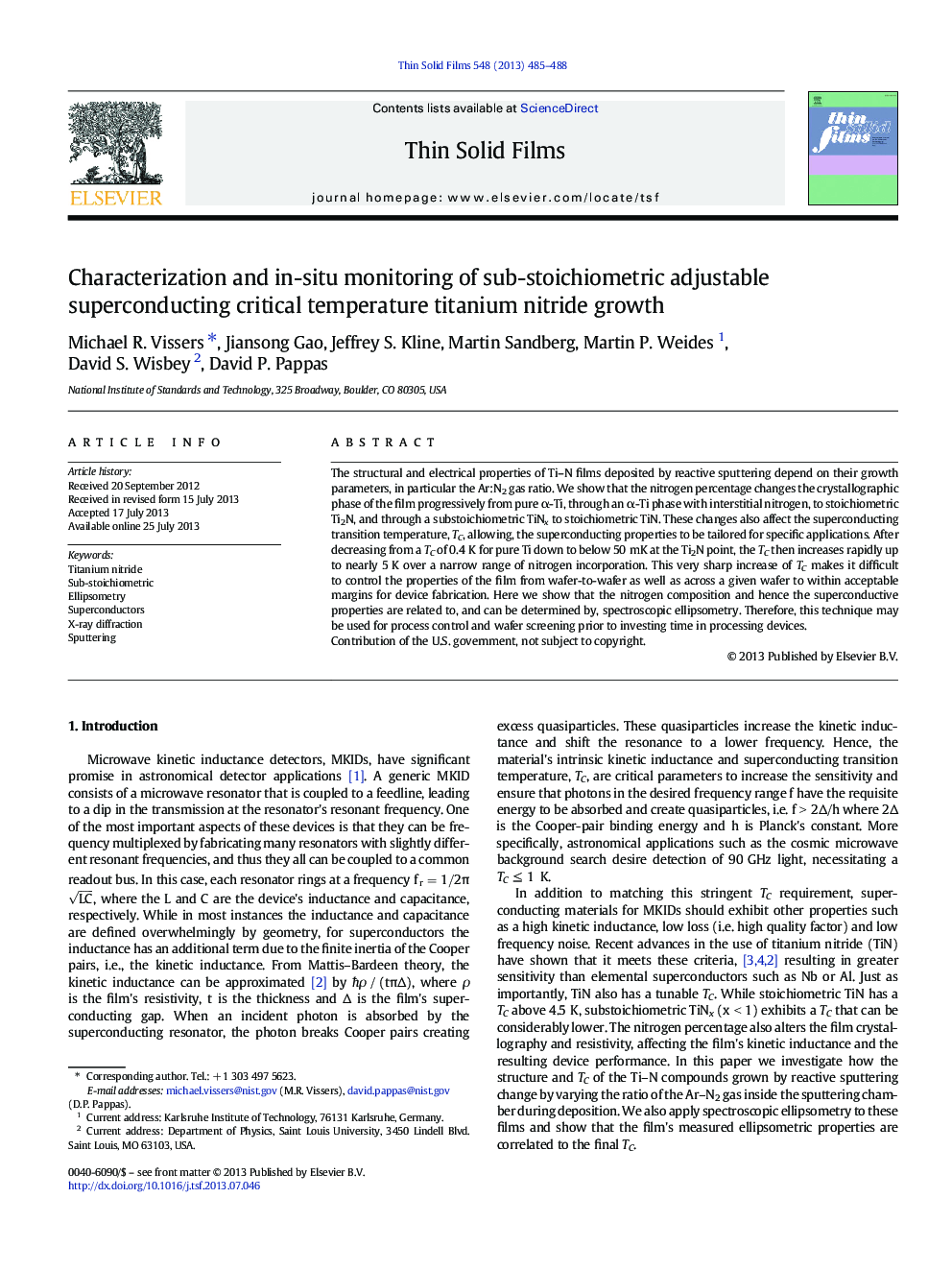| Article ID | Journal | Published Year | Pages | File Type |
|---|---|---|---|---|
| 1665853 | Thin Solid Films | 2013 | 4 Pages |
•Properties of reactively sputtered TiNx are controlled by argon:nitrogen process gas ratio.•The superconducting transition temperature, Tc, is reduced for lower nitrogen content.•Lower nitrogen content corresponds to greater (111) TiN and Ti2N texture.•The optical properties of TiNx are related to these compositional changes.•The position dependence of the optical properties predicts the Tc variation.
The structural and electrical properties of Ti–N films deposited by reactive sputtering depend on their growth parameters, in particular the Ar:N2 gas ratio. We show that the nitrogen percentage changes the crystallographic phase of the film progressively from pure α-Ti, through an α-Ti phase with interstitial nitrogen, to stoichiometric Ti2N, and through a substoichiometric TiNx to stoichiometric TiN. These changes also affect the superconducting transition temperature, TC, allowing, the superconducting properties to be tailored for specific applications. After decreasing from a TC of 0.4 K for pure Ti down to below 50 mK at the Ti2N point, the TC then increases rapidly up to nearly 5 K over a narrow range of nitrogen incorporation. This very sharp increase of TC makes it difficult to control the properties of the film from wafer-to-wafer as well as across a given wafer to within acceptable margins for device fabrication. Here we show that the nitrogen composition and hence the superconductive properties are related to, and can be determined by, spectroscopic ellipsometry. Therefore, this technique may be used for process control and wafer screening prior to investing time in processing devices.Contribution of the U.S. government, not subject to copyright.
